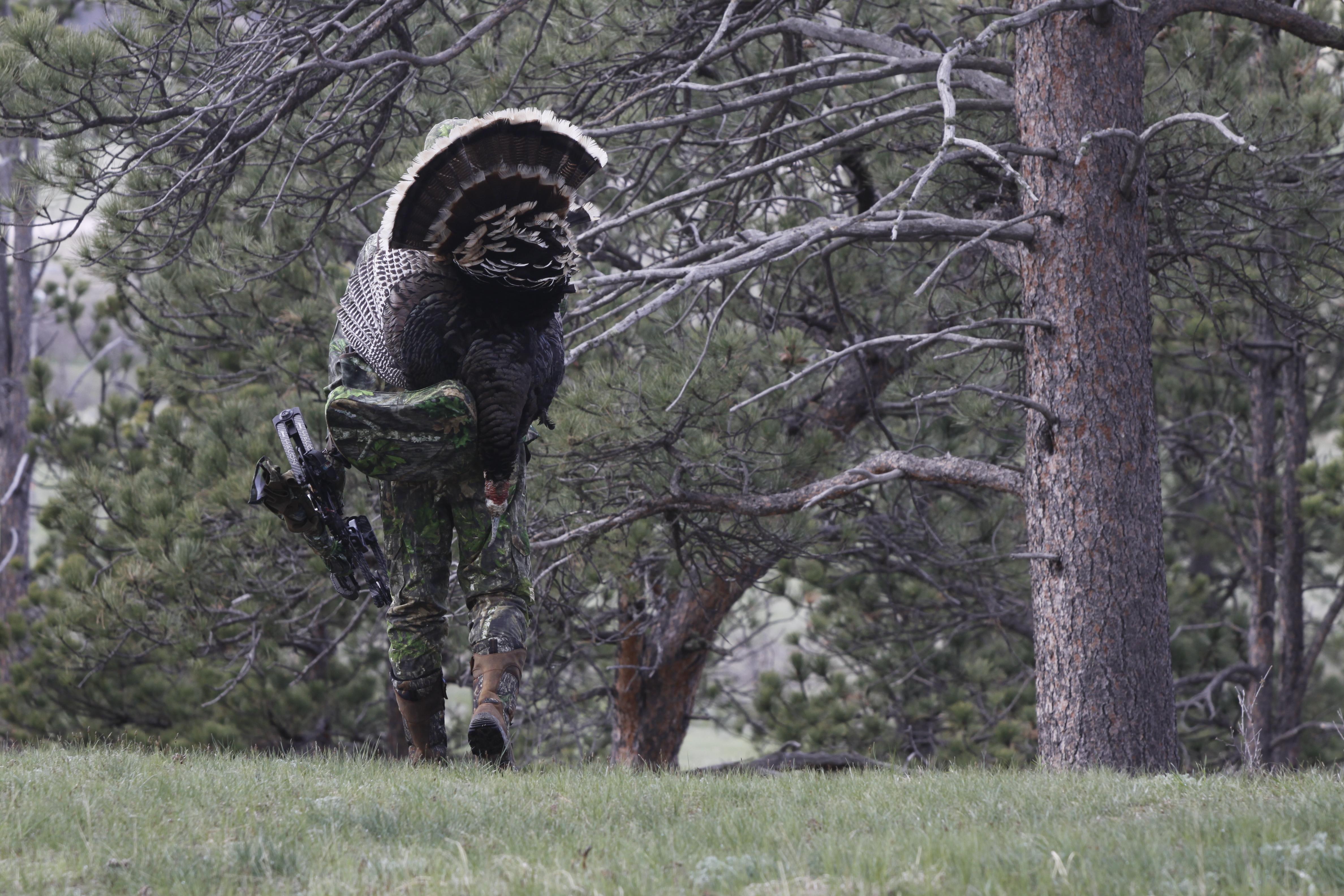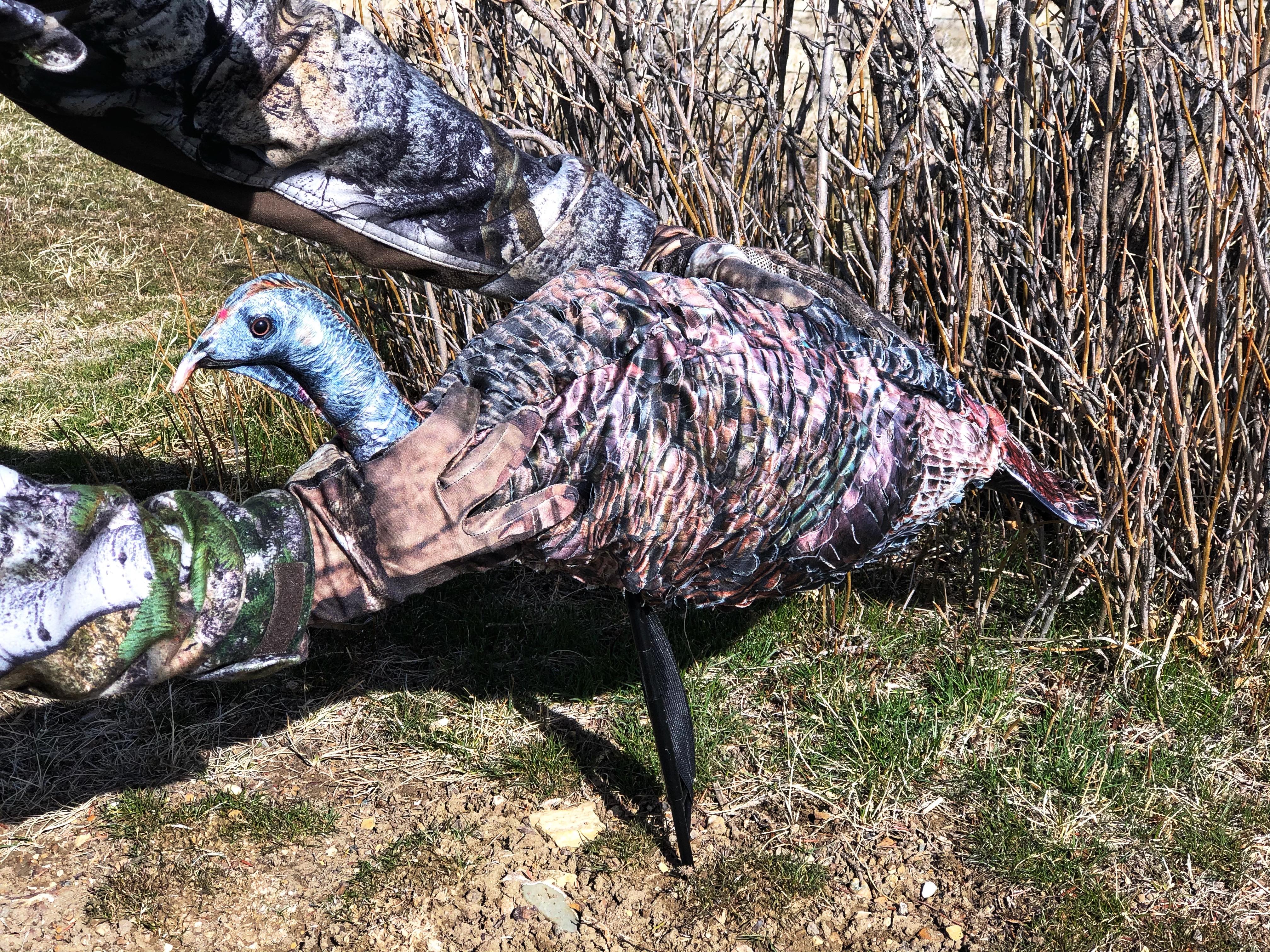Posted by Mark Kayser on Mar 31, 2021
HOW TURKEY DECOYS HELP YOU MAKE A PERFECT SHOT
Your decoy has the power to pull a gobbler into shooting range, but it can do so much more if you play it like a chess piece. Position your decoy correctly and you will have the shot dreams are made of, especially with a bow. Stake it randomly without any consideration of turkey behavior and your shot may become risky depending on the wariness of your quarry.
How Turkey Decoys Help You Make a Perfect Shot
Why is shot placement so critical with a turkey? Unlike whitetail deer or elk that have a kill zone that ranges from a paper plate to a basketball, the kill zone of a gobbler measures approximately four inches in diameter. That is just slightly larger than a baseball and considerably smaller than the kill zone on a whitetail. It is a small target so having every advantage, particularly a turkey that stands beside your decoy perfectly, is a distinct advantage.
Today, you have the option between dozens of lifelike decoys, even mounted turkeys, to utilize in your ruse. Realistic, lifelike, lightweight and effective all should be part of your purchase priority while shopping for new decoys. Montana Decoy Company delivers with collapsible decoys in their Purrfect XD collection. Convincing eyes, iridescent feather features and a bendable neck provide you with a decoy that does it all without bulk. The decoy springs to size and collapses in seconds for the long hike to your next setup site. They make the ideal companion to your turkey chess game.
X MARKS THE SPOT
Now it is time to make that chess move. To achieve the perfect shot, you must pinpoint a turkey’s vitals and that is compounded by a turkey’s dark feather pattern that blends, especially if the bird is in the shadows. You do not have the luxury of using the leg as an indicator of where to place the arrow like on a deer. Instead, you must memorize the vital-zone location centered on a turkey’s body with few body landmarks to base your perfect aim. In addition to the heart, lungs and liver, you also have the option of shooting a turkey in the head, through the backbone or shooting it through the thighs to ground it. Breaking one or both of a turkey’s legs will anchor the bird, but requires a nasty fight to administer the final coup if you miss the main leg artery.
Because a gobbler’s vital kill zone is so small and indiscriminate, bowhunters have been leaning more towards the head shot and for good reason. If you hit a gobbler and miss the midsection vital corridor you probably will lose the bird. Turkeys tend to bleed sparsely and what they do bleed generally gets sopped up in the feathers giving you little if anything to follow. Some hunters utilize string trackers to provide a trail to a wounded or dead bird, but to eliminate that hassle many hunters have switched to shooting a gobbler in the head. Head shots either dispatch a gobbler instantly or give you comfort in knowing you missed cleanly.

The next big target are the thighs and this target has attracted some ardent followers. Aim for where the thighs widen out and attach to the body. It is a larger aiming point and a direct hit brings a turkey escape to a halt. Turkeys require their legs to run or vault them into flight. Plus, you have the possibility of hitting the main artery in the legs that can also bleed out a turkey quickly.
If you have doubts about heads or legs, you always can go old school and target vitals. On a broadside turkey, aim for the region where the wing butt attaches to the body. This should take out lungs and heart, plus skim the backbone. If the turkey walks toward you, aim 1-inch below the beard for a piercing shot through the vitals with the possibility of a backbone hit as well. Finally, if the gobbler struts away, take the Texas heart shot and aim for the anus. This should destroy vitals for a wobbly, feeble escape and give you the pucker factor as you watch the arrow disappear.
Of course, for you shotgun enthusiasts, the head shot is still the best, but even then, having a close turkey that approaches your decoy with purpose is helpful. To take turkeys successfully and consistently with a shotgun you need to lure a gobbler within 30 to 35 yards. To consistently achieve success with archery gear, cut that distance in half and then some. A goal of getting a turkey to within 10 to 12 yards, 15 yards at the furthest is best.
MAKE YOUR CHESS MOVE
Using a variety of calls, quality ground blinds and decoys can bring any gobbler within spitting distance for a bow or firearm shot. This is where your chess game is important and to be the best player you need to understand turkey behavior during breeding season.

Gobblers approach hens from behind for breeding purposes so keep that mental image when positioning a hen decoy. If you like a rear shot, place the decoy facing away. If you like a broadside shot, place the decoy broadside and if you like a frontal shot, position the decoy straight at you. A tom will approach accordingly depending on the decoy position.
When utilizing a tom or jake decoy, keep in mind turkeys typically are confrontational to other males. They will approach from the side or head on. Your male turkey decoy should be staked to ensure that when a male turkey shows up, it still gives you the shot you want as it approaches the decoy, again depending on what vital zone you have decided upon with archery gear. With a shotgun, whack away when the gobbler extends his noggin.
Turkey hunting includes a myriad of challenges, but by utilizing your decoys resourcefully, you could set yourself up for checkmate!
Mark Kayser
